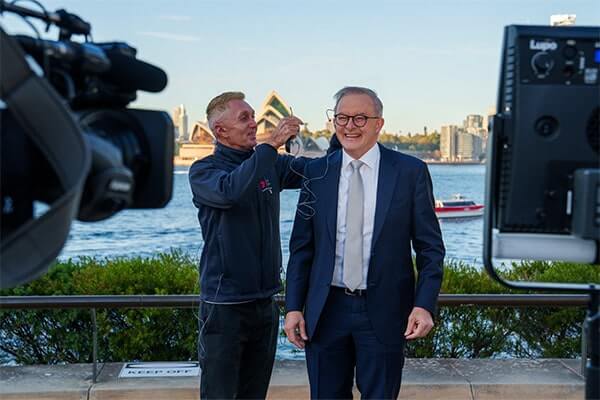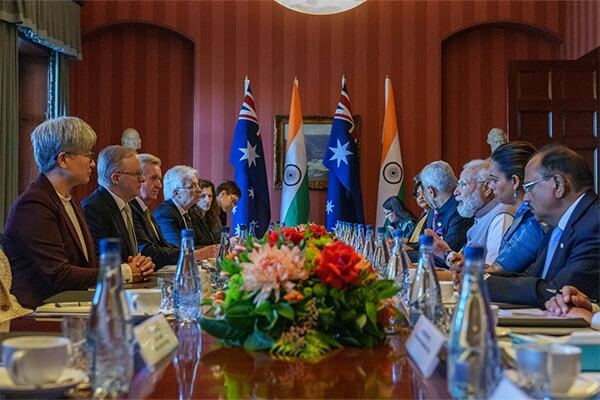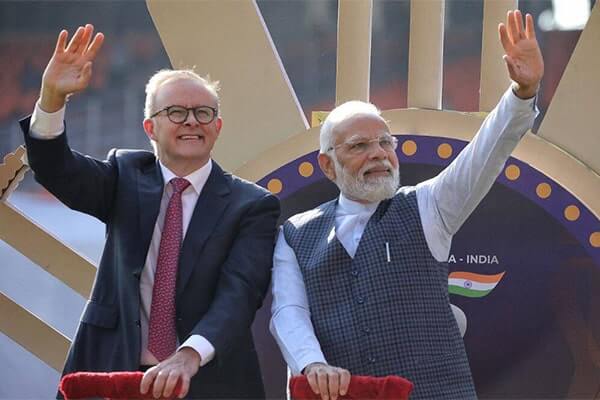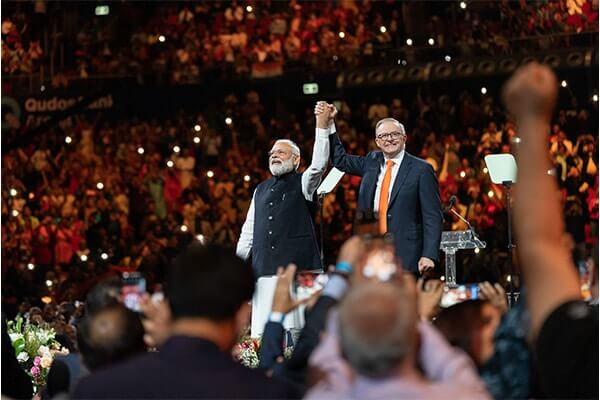“Excruciating diplomacy”.
That was how Prime Minister Anthony Albanese’s response this week on Australia’s most popular morning show Sunrise (Channel Seven) was described. Host David Koch put to Mr Albanese, “(PM Modi) has reduced press freedom; he discriminates against minorities; he is accused of watering down democracies – he is seen as a bit of a tyrant.” PM Albanese, rather than refuting any of these points, squirmed as he weakly explained the democratic values of India to a sceptical interviewer.
In fact, every radio and television show which covered PM Modi’s visit to Australia referred to the freedoms and treatment of minorities. When also asked the same questions, Foreign Minister Penny Wong agreed that though these and other issues are raised behind closed doors “respectfully”, if they are ignored, there’s not a lot Australia can do about it.

PM Modi’s visit has had wall-to-wall coverage in Australia: every major media outlet reported on his Quad-meeting-turned-bilateral-trade visit to Australia. One suspects that if PM Albanese could pick which of the three Quad leaders – President Biden, PM Yishida or PM Modi – could come through in case of a cancelled Quad, he would have chosen NaMo.
The diaspora reception for PM Modi was a resounding success with Albo enjoying the reflected glory of his Indian counterpart and banking on the political capital from the voting Indian Australian community at the Qudos Bank arena.
PM Modi himself did not disappoint with his 45-minute speech, cleverly crafted and professionally delivered, with a waggle of a finger to chide the detractors, and with an open-arm stance to embrace the qualities of those present. For the non-Indians who were present, it must have seemed like a different world to have the 18,000 plus attendees hanging on to every word.

But then, this is PM Modi’s speciality, and he revels in it. Yes to large crowds and big speeches. No to press conferences and door stops. For the leader of a modern democracy aiming to be a superpower, not having its leader answer questions from professional journalists will indeed be noticed.
While Brand India, which has the tailwinds of an economic juggernaut, takes an increasingly important position on the world stage, the question is how Brand Modi will be seen globally.
Akin to this Australian visit where every report questioned Modi’s democratic credentials, one wonders whether the same criticisms will be raised as he travels to other Western democracies such as the US later this month. While within the diaspora, there will be cult-like support, will Brand Modi get similar respect globally?

Accusing Western media of bias may not be the answer. Perhaps, through occasional press conferences and media interactions, there can be greater transparency on decisions taken. External Affairs Minister Jaishankar has shown, quite admirably, that this is a way to explain India’s choices and decisions and he has only gained in stature from that.
India as a nation with centuries of wisdom has much to offer the world. Its interactions globally have made it a powerful voice respected by all. Our leaders need to ensure that this continues long into the future.
READ ALSO: “What is it about Modi that attracts enormous crowds when he speaks?”




